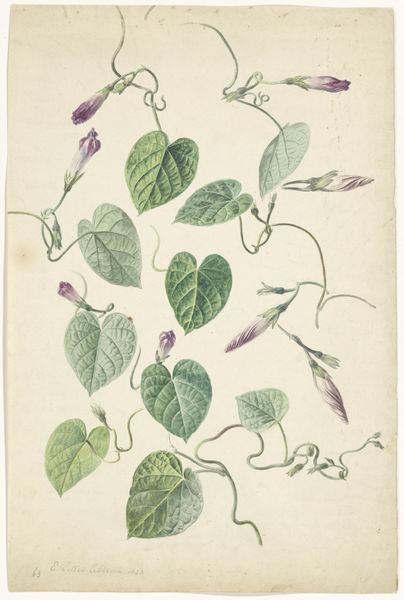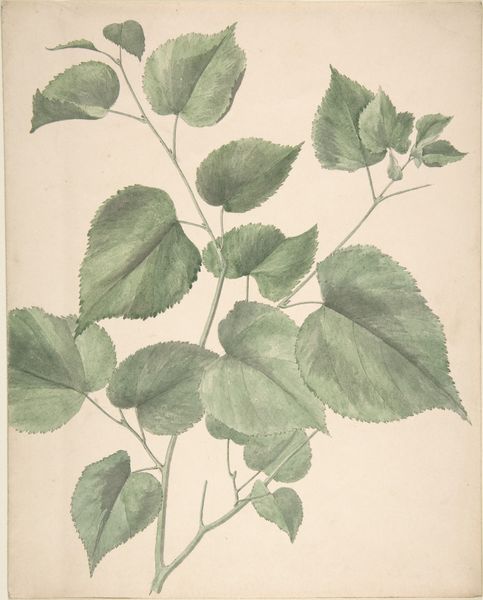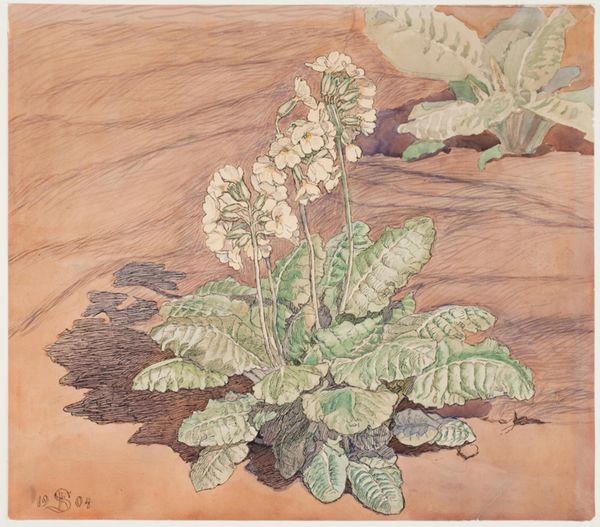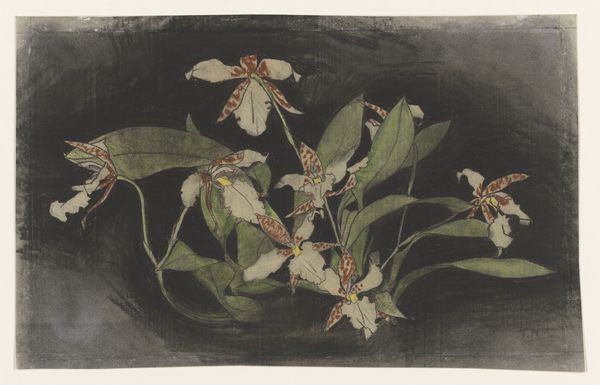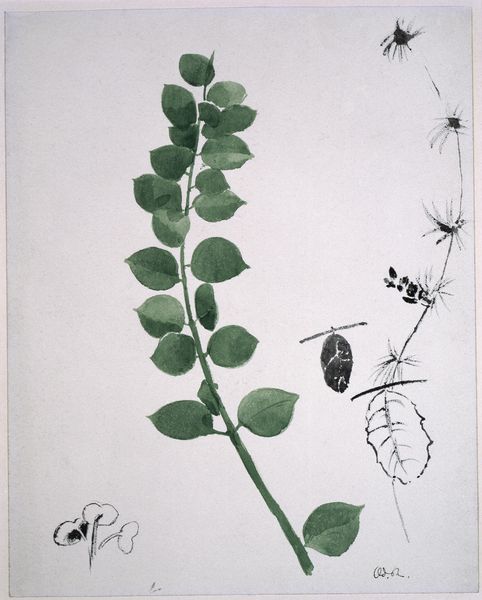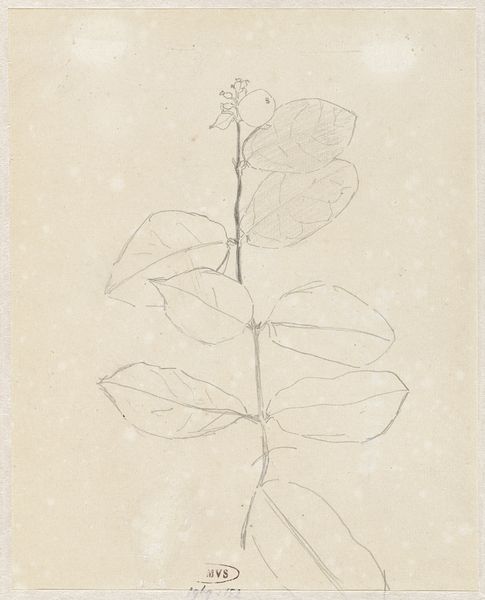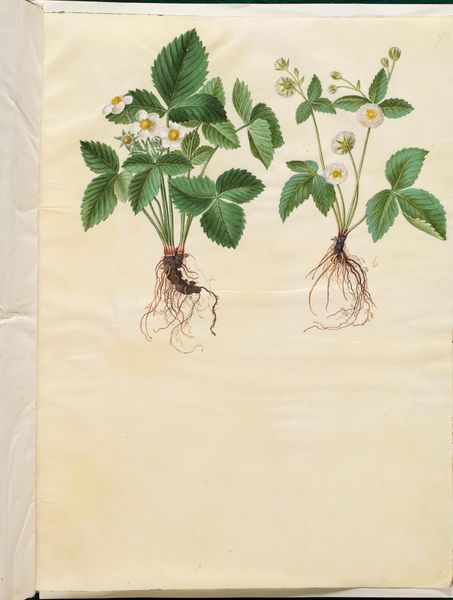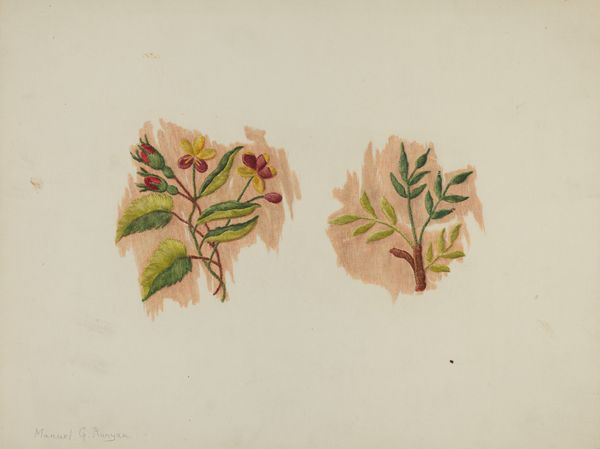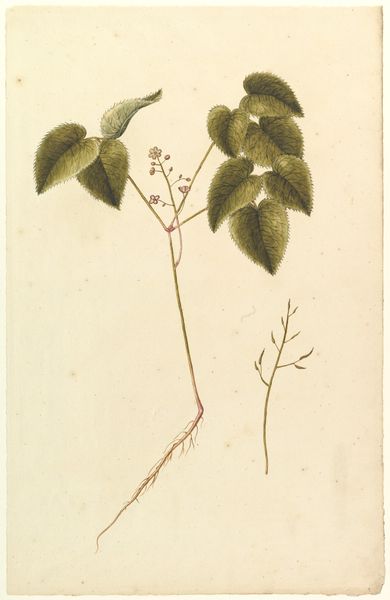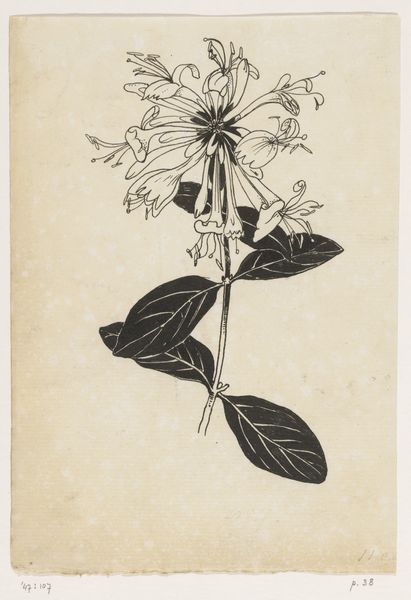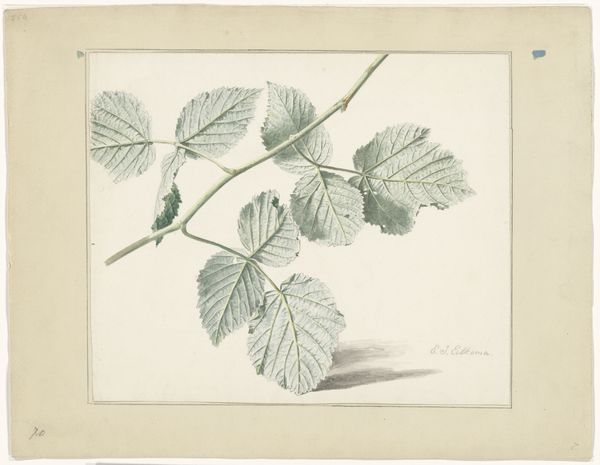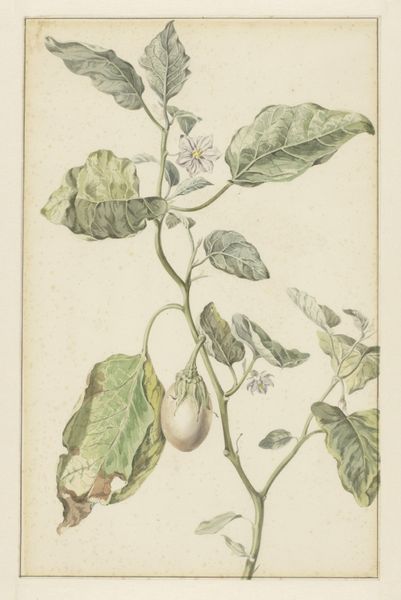
Dimensions: height 257 mm, width 350 mm
Copyright: Rijks Museum: Open Domain
Curator: A melancholic stillness settles over this work; despite the verdant greens, a somber mood prevails. Editor: This is "Kastanjebladeren," or "Chestnut Leaves," a drawing crafted with pastel and watercolor by Theo Nieuwenhuis. It’s housed here at the Rijksmuseum and, though its exact date is debated, it was made sometime between 1876 and 1951. I’m intrigued by the tension between representation and feeling it evokes. Curator: Absolutely. The composition is deceptively simple – just a cluster of chestnut leaves and a spray of blooms. But those leaves, those shapes so evocative of autumn, coupled with that dusky background...it reads like a reflection on fleeting beauty, even a memento mori. Chestnut trees, often symbols of resilience, here seem muted. Editor: I find it interesting how the materials enhance this sentiment. Pastel and watercolor lend themselves to capturing transient light and atmospheric effects, aligning with Impressionism. What do you see reflected in his palette choices and blending techniques? Curator: It's interesting. There's a blending, a sort of blurring that obscures crisp details which for me strengthens that connection to memory and nostalgia. The slightly faded tones suggest something recalled, rather than acutely observed. And note the singular white flower. Purity against decay? Editor: A poignant contrast. I am wondering, did the artist intend this contrast, or was he more invested in the botanical accuracy of the work? Could he be merely portraying the distinct botanical components of the chestnut tree? I see art museums displaying botanical drawing such as these for different intentions over the ages. Curator: It could have been his intention, and this work fits neatly within the era’s interest in capturing nature’s delicate beauty, but I struggle to accept that the artist was merely doing technical illustration when the drawing conveys so much feeling. I sense that Neuwenhuis isn’t simply showing us leaves, but sharing something about time, memory, and transformation. Editor: I agree. As we consider his work, we are confronted with art's continuous cultural exchange: its past meanings influencing and merging with present-day reflections. Curator: An evocative testament to art's ability to bridge not only time periods but inner experience and universal truths, wouldn’t you say?
Comments
No comments
Be the first to comment and join the conversation on the ultimate creative platform.
